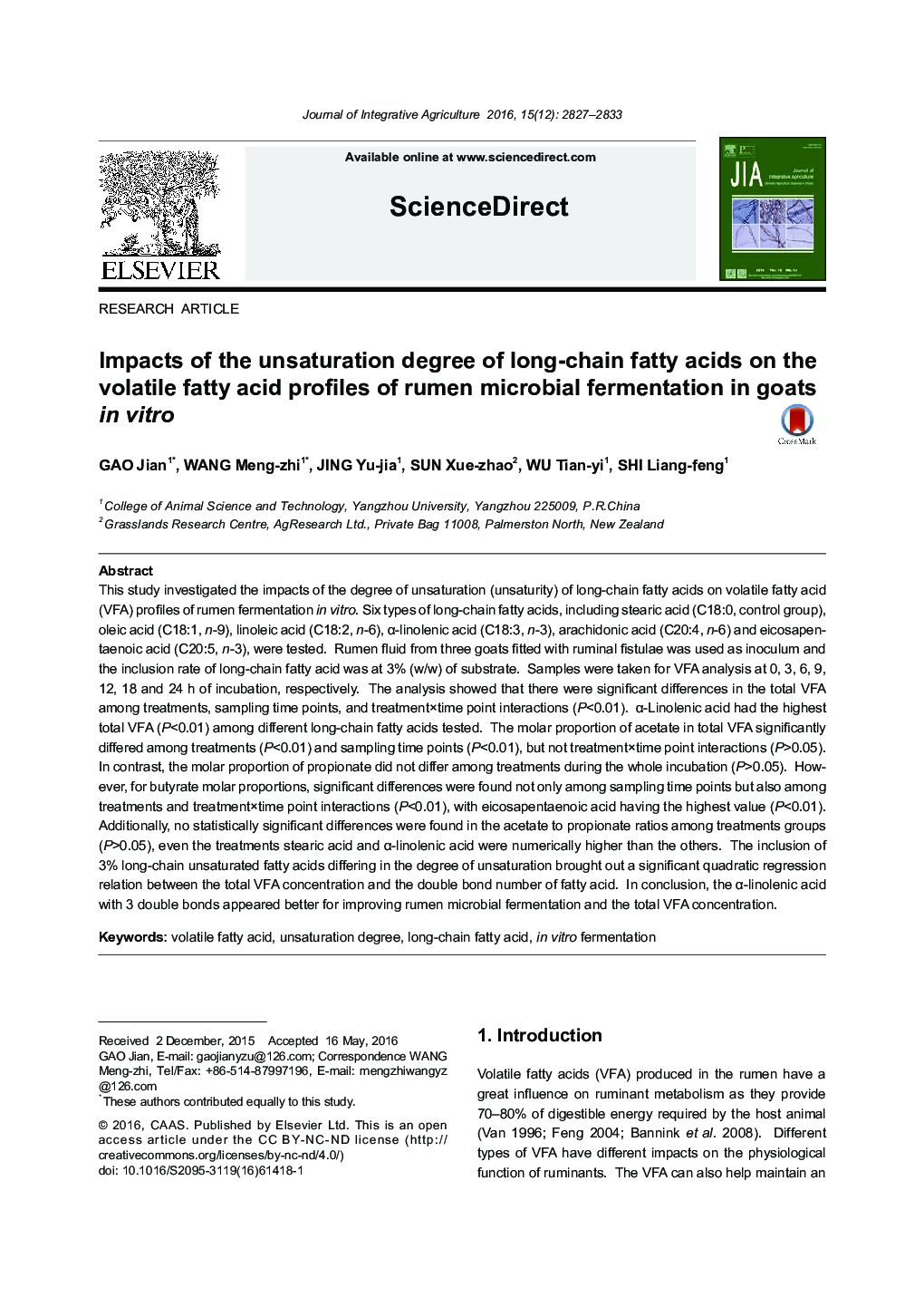| کد مقاله | کد نشریه | سال انتشار | مقاله انگلیسی | نسخه تمام متن |
|---|---|---|---|---|
| 8876170 | 1623714 | 2016 | 7 صفحه PDF | دانلود رایگان |
عنوان انگلیسی مقاله ISI
Impacts of the unsaturation degree of long-chain fatty acids on the volatile fatty acid profiles of rumen microbial fermentation in goats in vitro
ترجمه فارسی عنوان
تأثیر درجه غیبت اسیدهای چرب زنجیره طولانی بر روی پروتئین های اسید چرب فرار از تخمیر میکروبی شکم در بز ها در آزمایشگاهی
دانلود مقاله + سفارش ترجمه
دانلود مقاله ISI انگلیسی
رایگان برای ایرانیان
کلمات کلیدی
موضوعات مرتبط
علوم زیستی و بیوفناوری
علوم کشاورزی و بیولوژیک
علوم کشاورزی و بیولوژیک (عمومی)
چکیده انگلیسی
This study investigated the impacts of the degree of unsaturation (unsaturity) of long-chain fatty acids on volatile fatty acid (VFA) profiles of rumen fermentation in vitro. Six types of long-chain fatty acids, including stearic acid (C18:0, control group), oleic acid (C18:1, n-9), linoleic acid (C18:2, n-6), α-linolenic acid (C18:3, n-3), arachidonic acid (C20:4, n-6) and eicosapentaenoic acid (C20:5, n-3), were tested. Rumen fluid from three goats fitted with ruminal fistulae was used as inoculum and the inclusion rate of long-chain fatty acid was at 3% (w/w) of substrate. Samples were taken for VFA analysis at 0, 3, 6, 9, 12, 18 and 24 h of incubation, respectively. The analysis showed that there were significant differences in the total VFA among treatments, sampling time points, and treatmentÃtime point interactions (P<0.01). α-Linolenic acid had the highest total VFA (P<0.01) among different long-chain fatty acids tested. The molar proportion of acetate in total VFA significantly differed among treatments (P<0.01) and sampling time points (P<0.01), but not treatmentÃtime point interactions (P>0.05). In contrast, the molar proportion of propionate did not differ among treatments during the whole incubation (P>0.05). However, for butyrate molar proportions, significant differences were found not only among sampling time points but also among treatments and treatmentÃtime point interactions (P<0.01), with eicosapentaenoic acid having the highest value (P<0.01). Additionally, no statistically significant differences were found in the acetate to propionate ratios among treatments groups (P>0.05), even the treatments stearic acid and α-linolenic acid were numerically higher than the others. The inclusion of 3% long-chain unsaturated fatty acids differing in the degree of unsaturation brought out a significant quadratic regression relation between the total VFA concentration and the double bond number of fatty acid. In conclusion, the α-linolenic acid with 3 double bonds appeared better for improving rumen microbial fermentation and the total VFA concentration.
ناشر
Database: Elsevier - ScienceDirect (ساینس دایرکت)
Journal: Journal of Integrative Agriculture - Volume 15, Issue 12, December 2016, Pages 2827-2833
Journal: Journal of Integrative Agriculture - Volume 15, Issue 12, December 2016, Pages 2827-2833
نویسندگان
Jian GAO, Meng-zhi WANG, Yu-jia JING, Xue-zhao SUN, Tian-yi WU, Liang-feng SHI,
